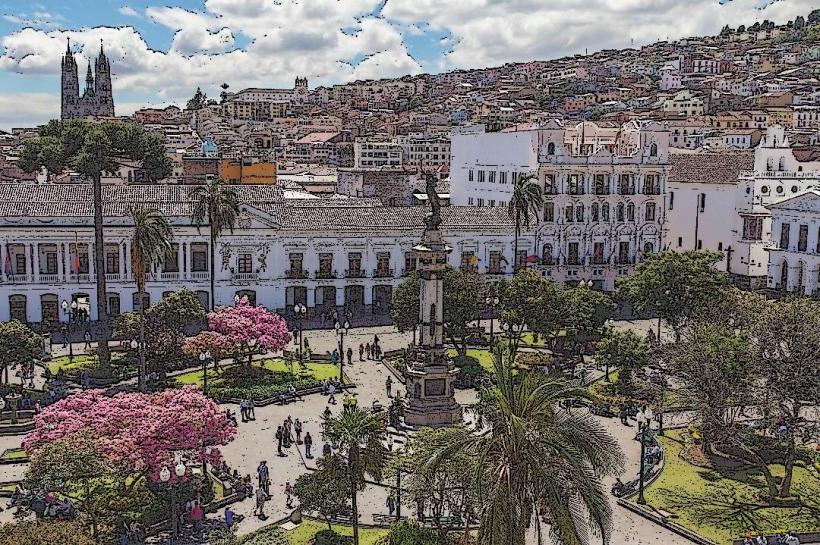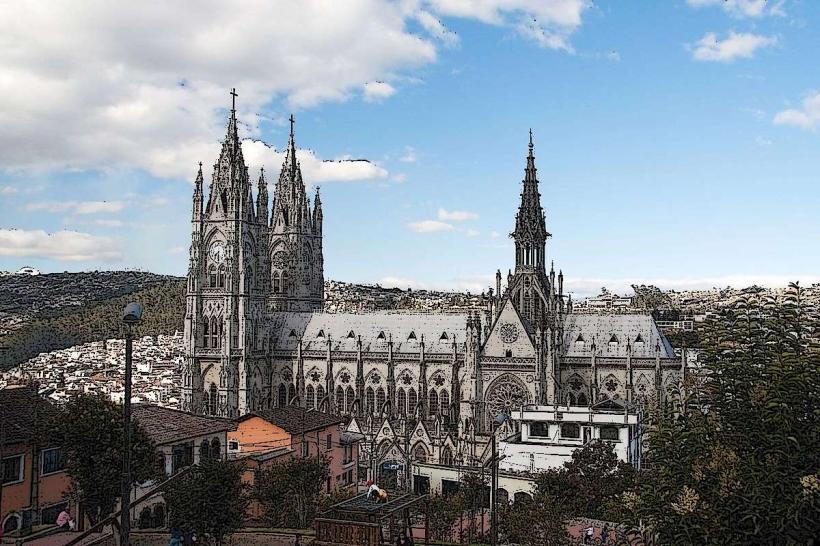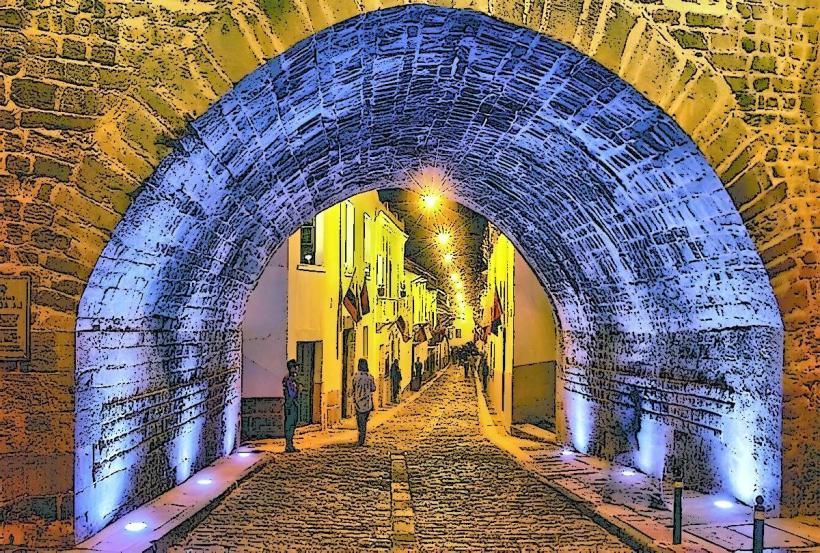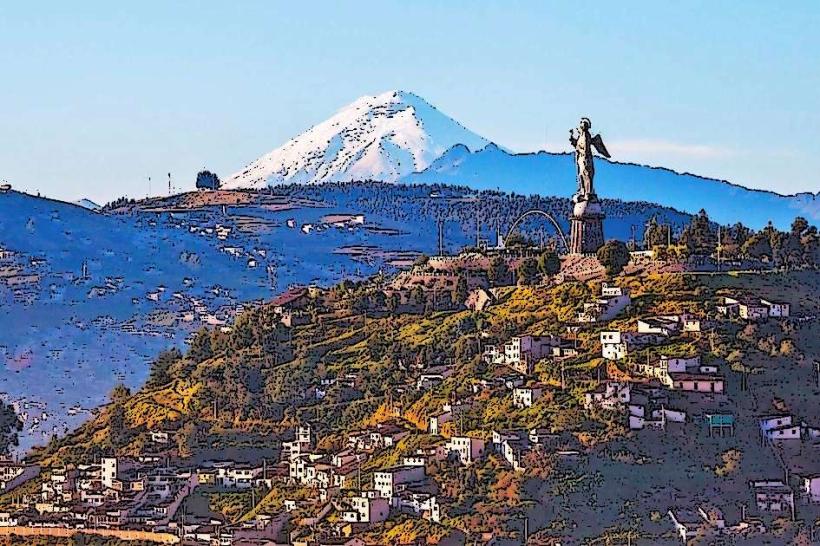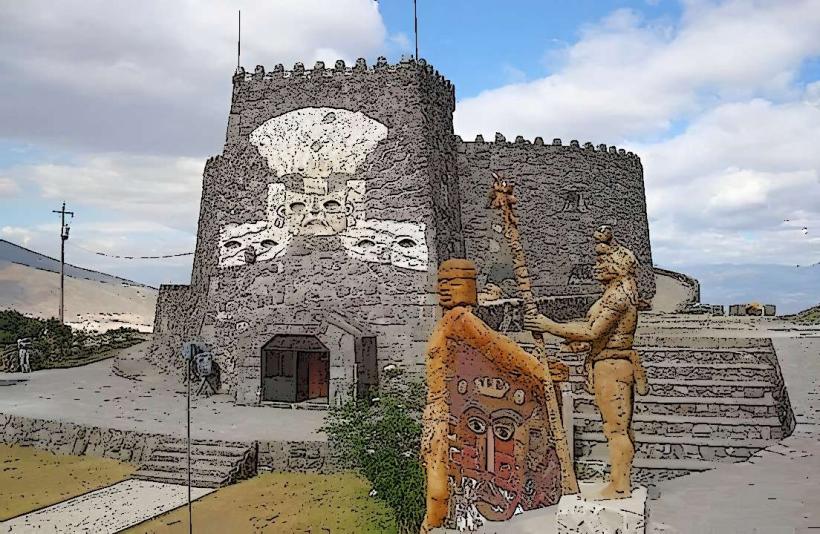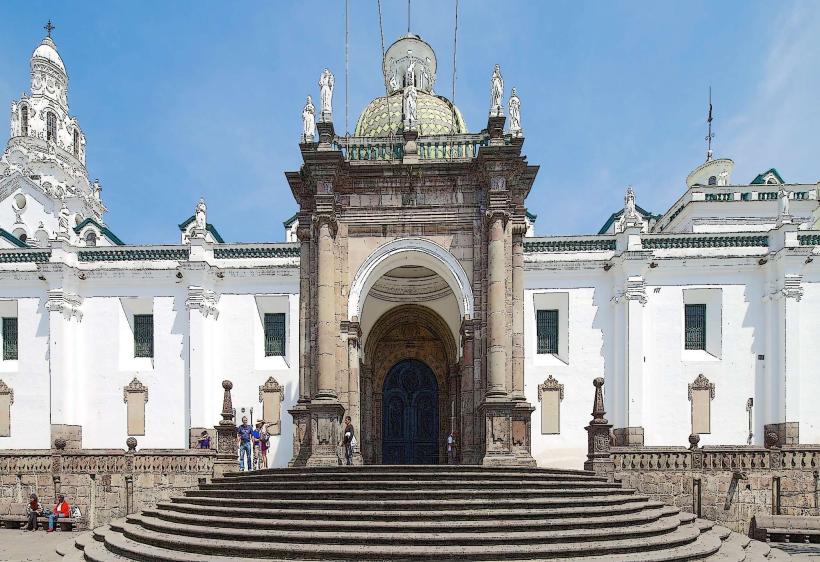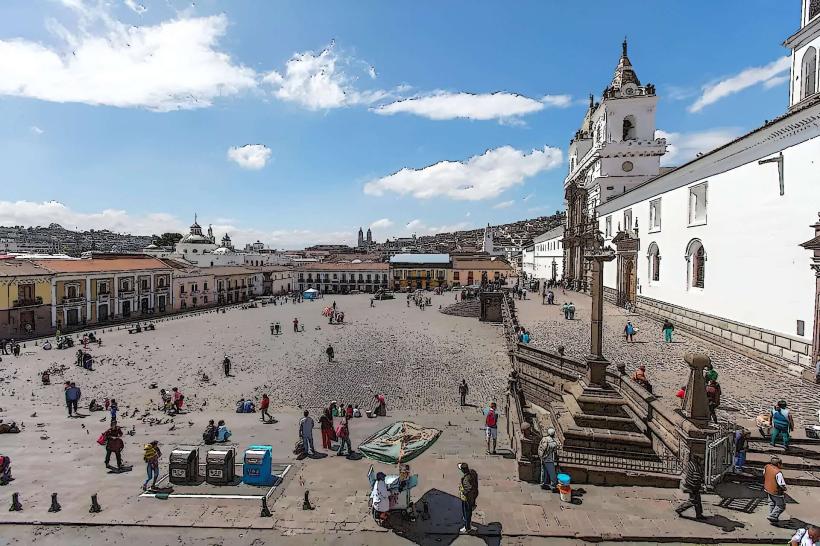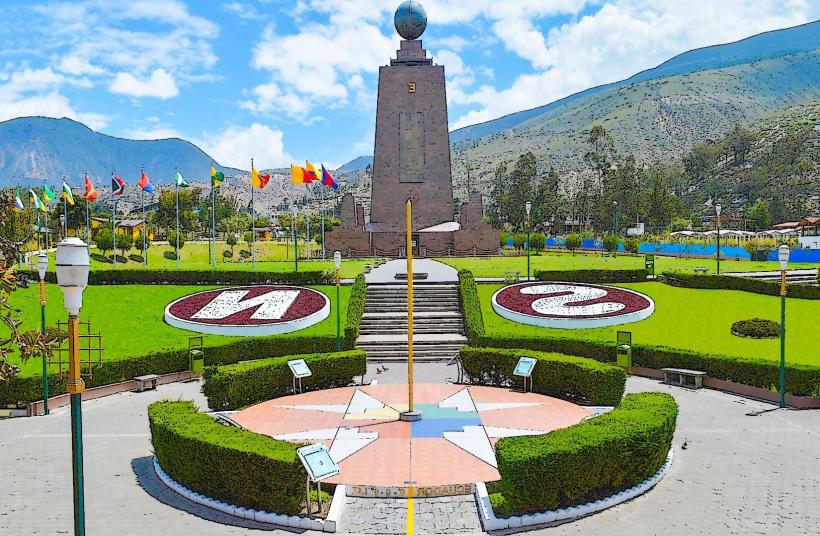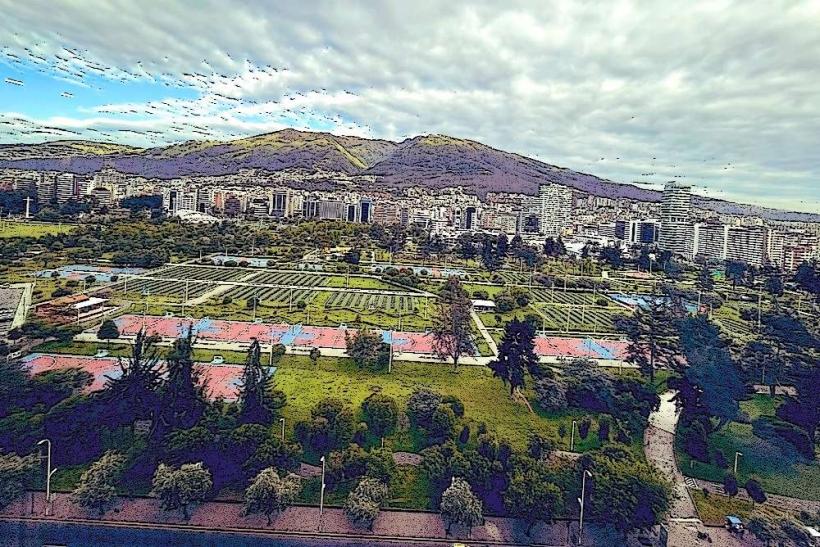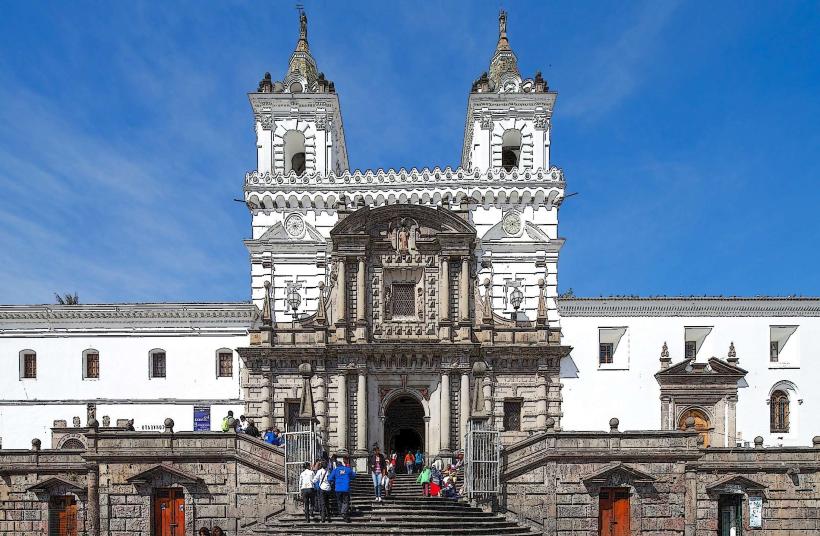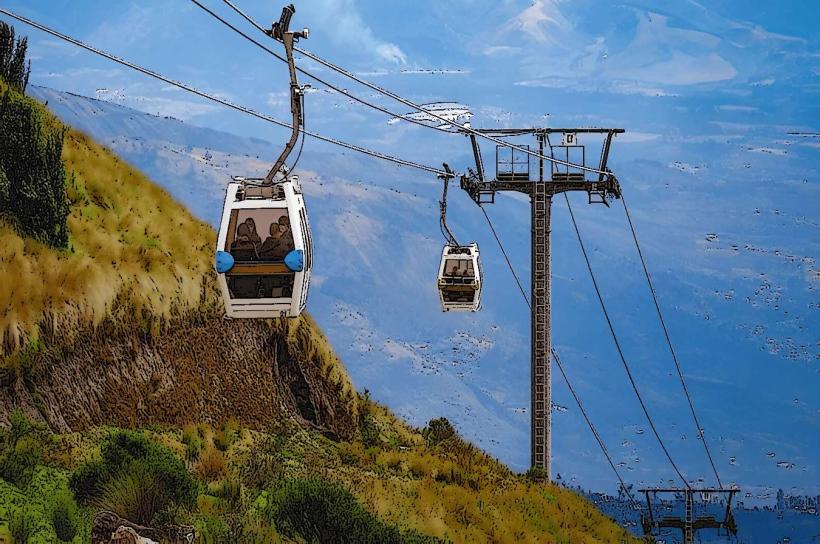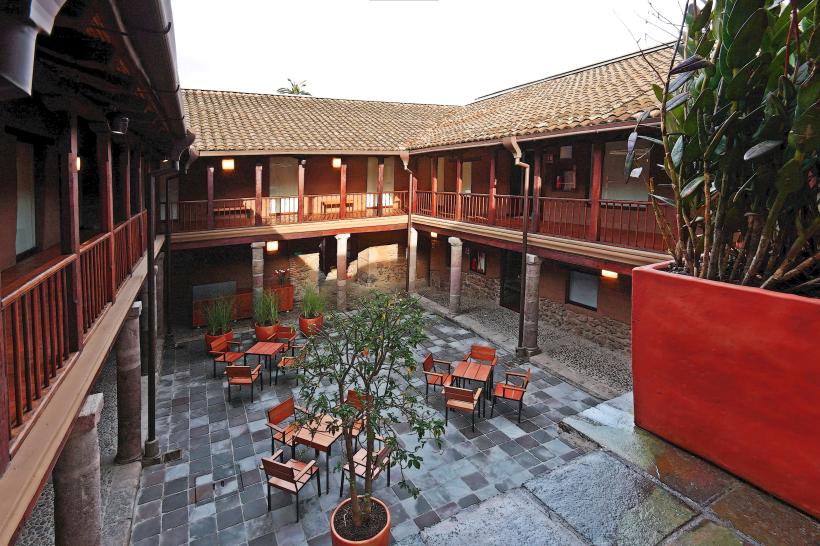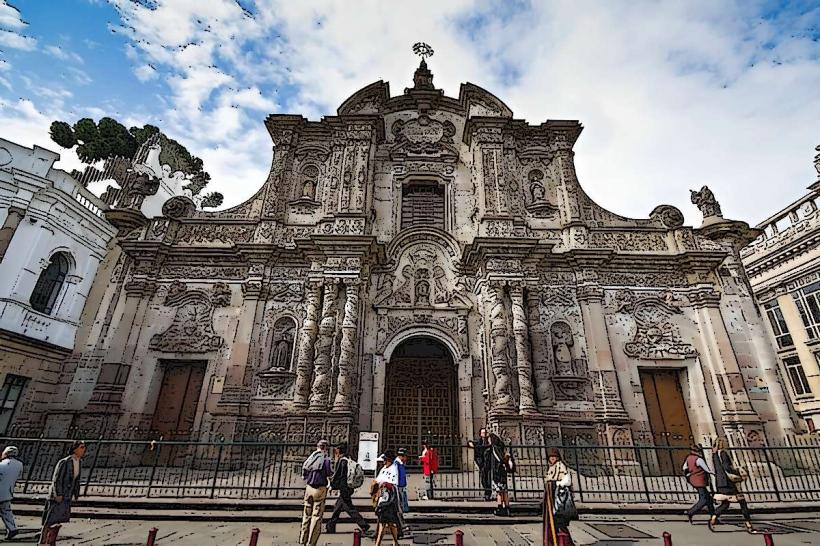Information
Landmark: La Virgin del PanecilloCity: Quito
Country: Ecuador
Continent: South America
La Virgin del Panecillo, Quito, Ecuador, South America
Overview
Perched high on El Panecillo hill, La Virgen del Panecillo watches over Quito, her silver wings catching the afternoon sun, and from up there, the city stretches out in every direction, on top of that this striking statue of the Virgin Mary stands out for its dynamic design, with sweeping wings-an unusual detail-and a serpent bound in chains at her feet, a vivid image of good’s victory over evil.From many spots around Quito, you can spot the monument rising against the sky, a city symbol that weaves together faith, history, and delicate craftsmanship, on top of that el Panecillo isn’t just an artistic landmark-it’s steeped in history, reaching back to pre-Columbian days when the Quitu people gathered there for sacred ceremonies beneath the high Andean sky.Long before the Spanish conquistadors set foot in Quito, the local indigenous people gathered on El Panecillo, treating the hill as a sacred setting where smoke from their fires curled into the thin mountain air, also long ago, the hill-known in Kichwa as Shungoloma, or Heart Hill-was seen as sacred, a location where indigenous people greeted the sunrise and carried out their rituals, in a sense When the Spanish arrived in the 16th century, they tore down the indigenous temples and turned the hill into a lookout bristling with soldiers, and over time, the spot turned into both a stronghold and a familiar marker in the city’s map, like a stone tower rising above the rooftops.In 1975, workers broke ground on the Virgen del Panecillo, ushering in a contemporary chapter for the hill as both a spot of worship and a cultural landmark, its silver panels catching the mountain light, subsequently the Virgen del Panecillo, created by Spanish artist Agustín de la Herrán Matorras, was unveiled in 1975, its silver wings catching the highland sun.The statue takes its inspiration from an 18th-century masterpiece by Bernardo de Legarda, a leading figure of the Quito School of Art, known for merging European Baroque elegance with the vivid colors and patterns of indigenous tradition, and rising 41 meters, or about 135 feet from base to crown, the statue ranks among the tallest depictions of the Virgin Mary anywhere in the world.The Virgin Mary with Wings is a striking and unusual statue, one of the rare depictions portraying her as the “Woman of the Apocalypse” described in Revelation 12:1–6, with wings that seem ready to lift her into the sky, furthermore chained Serpent Under Her Feet – a traditional Catholic symbol showing good’s triumph over evil, like a serpent coiled and powerless beneath her heels.Crown of 12 Stars - a nod to Revelation’s vision of the woman clothed with the sun, a figure often linked to the Virgin Mary, her head encircled in a radiant halo of light, subsequently her robes ripple around her as she strikes a lively pose-unlike the still, solemn figures you usually spot, this Virgin seems ready to lift into the air, carrying a breath of grace and divinity with her, generally The statue’s built from 7,400 aluminum panels, and in the midday sun they catch the light like scattered silver scales, what’s more uncommon for its time, this technique lends the Virgin a modern, almost ethereal glow, like moonlight on pale stone.Visitors crowd El Panecillo for its sweeping 360-degree view of Quito, where rooftops gleam in the sun and the mountains wrap the city in green, consequently from the top, you can spot the Centro Histórico, where colonial churches rise over sunlit plazas and rows of vivid, painted houses.Quito’s modern skyline stretches toward the mountains, with glass towers glinting above La Carolina Park and the city’s rapidly growing north, likewise the Andes rise behind the city, their jagged peaks catching the first pink light of dawn.On a clear day, you can spot Cotopaxi, Pichincha, and Cayambe rising faintly on the horizon, their snowy peaks catching the sun, simultaneously inside the statue’s base, an observation deck lets visitors step up and take in an even broader view of the city, rooftops stretching out in every direction.The Virgen del Panecillo isn’t only a striking work of art; it’s a cherished region of worship where candles flicker in the evening breeze, what’s more it’s a site where people come to worship, especially during celebrations like December 6th’s Fiestas de Quito, when the streets burst with music, colorful parades, and the smell of roasted corn drifting through the air, to some extent Holy Week, or Semana Santa, draws crowds who stroll to churches and shrines scattered across the city, candles flickering in their hands, at the same time it’s also a national symbol of Ecuador’s faith and identity, a reflection of the deep Catholic roots that have shaped Quito’s culture-like the church bells echoing through its narrow, sunlit streets, under certain circumstances La Virgen del Panecillo sits high in Quito’s center, easy to reach by car, taxi, or a guided tour that winds up the hill past colorful houses, subsequently because the area can feel unsafe, it’s best to join a tour or hop in a taxi instead of walking alone, especially after dim when the streets grow quiet.The monument’s open every day, so you can wander around its base, climb up to the observation deck, and take in the sweeping view, wind brushing your face, then morning is the perfect time to go-the air feels crisp, and the sky often stretches clear and blue, giving you unmatched views of the city and the mountains beyond.Sunset is the perfect moment for a sweeping view, with the first city lights flickering like tiny candles below, alternatively if you’re nearby, grab a bite of the local flavors-tiny cafés serve steaming bowls of locro de papa, flaky empanadas, and mugs of sweet, spiced canelazo, slightly While you’re in the vintage Town, roam up to El Panecillo-it’s just a short stroll from Plaza de la Independencia, the lantern-lit street of La Ronda, and Quito’s centuries-heritage churches, in addition take in a different perspective-if sweeping city views are your component, ride the Teleférico de Quito, where the air thins and the rooftops spread out far below.Honestly, So why make the trip to La Virgen del Panecillo, where the silver-winged statue watches over Quito, simultaneously la Virgen del Panecillo isn’t just a statue-it’s Quito’s proud symbol, a stunning work of sacred art, and a hilltop lookout where the wind smells of eucalyptus and the city sprawls far below.When you visit this site, you step into a region that holds centuries of indigenous and colonial history-you might even feel the worn stone steps under your feet, to boot an original take on the Virgin Mary blends European elegance with the vivid patterns of Ecuadorian design.From here, you get one of Quito’s finest panoramic views-rooftops and distant volcanoes stretching out in every direction, simultaneously it’s a cultural and religious landmark, woven into Quito’s identity like the bells that echo through its narrow streets.If you’re diving into Quito’s rich history and culture, don’t skip La Virgen del Panecillo-its towering statue and sweeping city views make it unforgettable.
Author: Tourist Landmarks
Date: 2025-09-18

